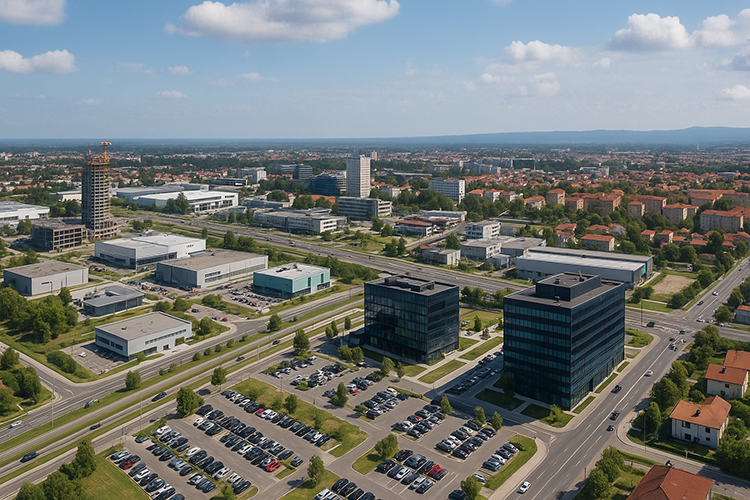2025-10-07
markets

Croatia’s property market is maintaining a steady pace in the second half of the year, as new supply enters the pipeline, credit conditions ease, and tighter rules begin to reshape investment decisions in coastal and urban areas. While the early summer months saw a strong flow of tourism and a modest increase in retail activity, housing and commercial trends suggest a gradual stabilisation rather than acceleration. Economic growth slowed to just under 3 percent year-on-year in the first quarter, indicating that the surge seen after the pandemic has settled into a more sustainable rhythm. Yet the country continues to outperform some of its regional peers thanks to its service sector, tourism revenues, and a cautious approach to construction financing. Analysts expect Croatia’s GDP to expand by roughly 2.5 to 3 percent for the full year, supporting a broadly stable real estate environment. Office and Logistics Markets Stay Balanced In Zagreb, office occupancy remains tight, with rents at the upper end of Central European levels but relatively little new speculative construction. Developers are advancing several mid-sized business parks and mixed-use buildings, particularly in Buzin and Radnička, while larger projects like Matrix D and Landmark Green Towers are expected to complete through 2026. In the logistics sector, supply is finally aligning with demand. Several regional hubs west and south of the capital have added capacity in 2025, including in Samobor and Velika Gorica. Vacancy rates are among the lowest in the region, hovering near two to three percent, and rental growth has flattened after several years of sharp increases. Retail Supported by Consumer Spending and New Parks Croatia’s retail market continues to draw steady investor interest, reflecting healthy household spending. Retail turnover in mid-2025 was notably higher than a year earlier, with strong non-food sales and a record number of new retail park openings in secondary cities. More than a dozen new schemes are in development across the country, adding tens of thousands of square metres to regional supply. Prime high-street and shopping centre rents have stabilised after gradual growth through 2024, while retail parks remain a focus for domestic investors seeking long-term, inflation-resistant income. Tourism Extends Beyond Summer Tourism remains a pillar of the national economy. By the end of August, Croatia had already surpassed last year’s record number of visitors, with hotel occupancy stretching further into the spring and early autumn. Industry observers note that tourist spending is increasing at a faster pace than arrivals, helping to support retail, hospitality, and short-term rental markets. New international hotel brands have expanded their presence in 2025, including openings in Zadar and on Ugljan Island, while refurbishment projects in Split and Dubrovnik continue ahead of 2026’s peak season. Residential Prices Show Signs of Cooling After several years of rapid appreciation, housing prices have begun to level off. Average national prices range from around €2,000 per square metre inland to over €3,500 on the coast, depending on location and amenities. Mortgage rates eased slightly through the spring, encouraging a rebound in housing loans. Nonetheless, regulatory changes—particularly a new property tax system and stricter rules for short-term rentals in apartment buildings—are expected to slow speculative activity in popular tourist zones. Developers are also facing tighter planning frameworks in Zagreb, where a revised city plan aims to balance residential growth with infrastructure capacity. Domestic Investors Lead, but International Interest Persists Investment transactions in 2025 have remained concentrated among Croatian buyers, though international funds continue to watch the logistics and retail sectors closely. Institutional investors are assessing assets in Zagreb and along the Adriatic coast, drawn by solid occupancy levels and stable returns. Advisers say yields are largely unchanged from last year, with prime offices and logistics assets attracting strong competition amid limited stock. Outlook for Late 2025 and Beyond As the year closes, Croatia’s property market appears well anchored. Economic growth is cooling but steady, tourism continues to expand its seasonality, and real estate development is moving in line with demand rather than speculative excess. The combination of moderate lending rates, steady domestic investment, and new regulatory clarity is likely to keep the market balanced heading into 2026. Source: Colliers Croatia and comp.

